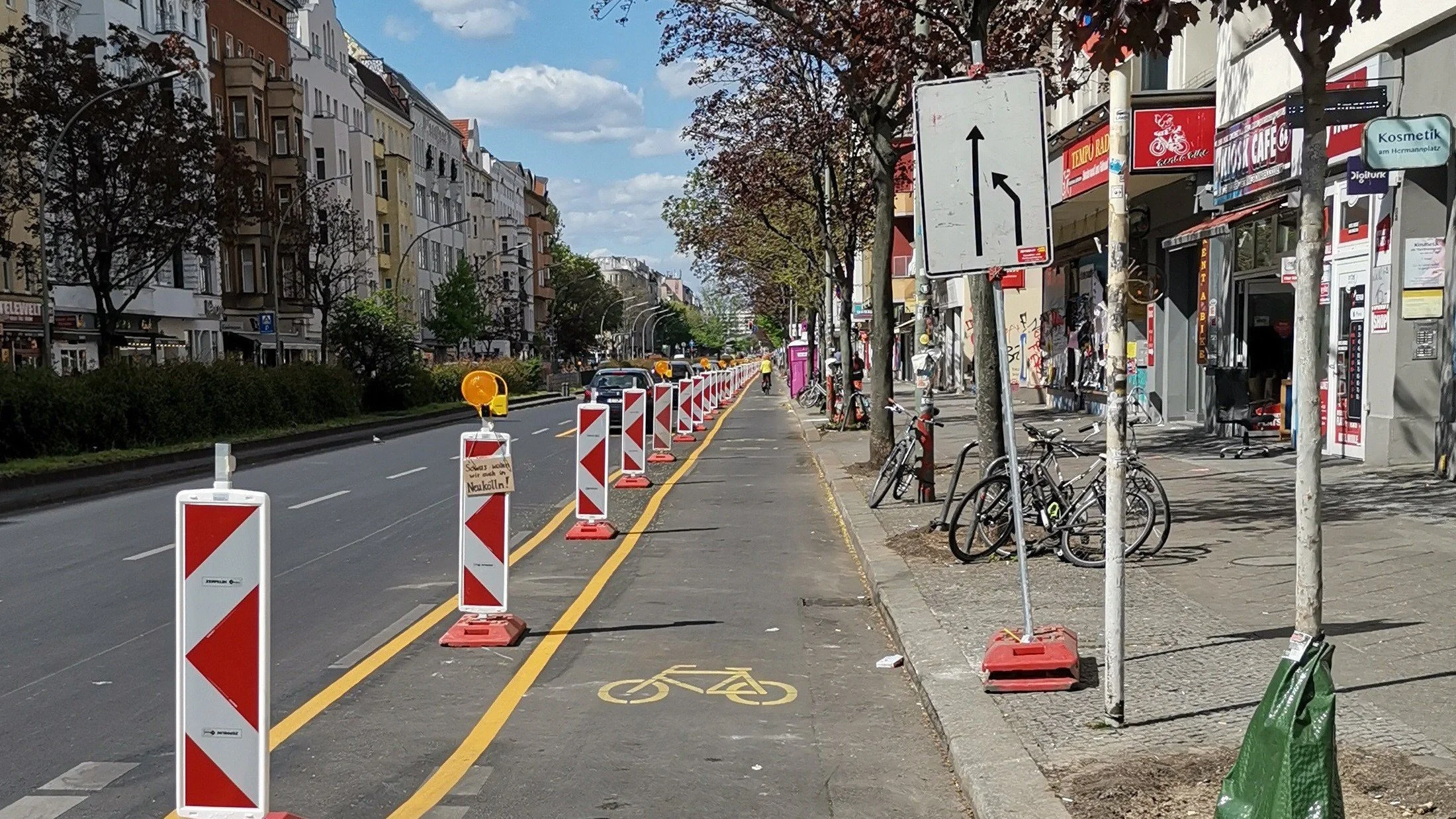A Strong Towns Advocate Took Safety Into His Own Hands in Philadelphia
David Brindley is more concerned with what he can do than what he can’t. After his friend was struck while cycling on one of Philadelphia’s busiest bike routes in 2015, he concluded inertia wasn’t an option. He immediately began collecting “orphaned cones,” as he described them, and lining the 3700 block of Spruce Street in University City.
Prior to Brindley’s guerrilla initiative, the corridor’s bike lane was defined by a single strip of faded white paint in some sections and nothing in others. Its invisibility in conjunction with the intersection’s wide shoulder has long tempted motorists to swerve into cyclists, pushing them into oncoming traffic or the deep grooves of the street’s trolley tracks, notoriously unfriendly to bike tires.
However faded and worn, there was technically a bike lane. Therefore, Brindley fundamentally saw his efforts as reinforcing the city’s intentions, rather than contesting them.
Every other day, he gathered cones abandoned by municipal departments, as well as private companies—Verizon, Philadelphia Gas Works, Philadelphia Water, and so on—to furnish his protective barrier. For a while, the motley crew of cones survived largely unquestioned. "I had no idea if it would be there the next day or not," he told The Philadelphia Inquirer in late 2016. "But it's been two years. By now, the police think it's theirs."
Setting up cones on Spruce Street.
Cones David Brindley set up in front of Hospital of the University of Pennsylvania.
Confident, he endeavored expansion. “However, I was a bit like Icarus and flew too close to the sun,” Brindley chuckled. “I tried it again on a much larger stretch by the adjoining University at Drexel, the 3200 block of Chestnut, which is full of restaurants, student activities, yet was simultaneously such a dangerous stretch.”
The cones only lasted a few days on Chestnut. The day they disappeared, Brindley asked an officer nearby if he’d seen where they went. “He told me, ‘Well, one of them says Comcast, the other says Water Department, so we realized this was just some nut putting out cones.’” To that, Brindley added, “Yeah, but that nut was keeping us safe!”
While Brindley appeared to be unconcerned with the legalities of what he was doing, believing fundamentally that “doing the right thing” supersedes legal code, he remained undercover throughout his tactical work.
Nevertheless, he sacrificed his anonymity when chatting to 5th Square co-founder, Jon Geeting. The two were talking about the press a similar tactical initiative in San Francisco received, which in part pressured the city to make permanent changes. “Well, no one’s gonna write a story about my bike lane,” Brindley lamented, at which point Geeting pointed to a journalist beside them. “I’ve always wanted to do a story on tactical urbanism, but it’s not like you guys advertise yourselves!” Brindley remembered the journalist saying.
Debating whether to blow his cover, he figured there were only two possible outcomes: “They’re either going to make it permanent or take it away. Those are really the only two options.”
That’s how he and his cones were profiled in The Philadelphia Inquirer. To his surprise, the city neither cracked down on his cones nor took inspiration from the initiative. Instead, Philadelphia followed up with a third option: do nothing. For the next few years, the city did nothing about his cones nor the road, so he continued rehoming stray cones until a transformative repavement project five years later in 2021.
“The partially happy and infuriating ending to this story is that for about three quarters of the stretch they put in flex posts, which do offer some but not a complete level of protection,” he explained. “And then the flex posts just stop.”
An entirely separate but kindred initiative by Brindley was met with a similarly disappointing fate. Soon after he was profiled for The Inquirer, he launched Not in Philly, which he described as the first adopt-a-block website to tackle the city’s litter problem. The project was produced with the help of Code for Philly, a volunteer-run civic hacking group associated with non-profit Code for America, and at its peak had thousands of users coordinating clean-ups.
However, as Not in Philly’s novelty wore off, the site’s maintenance became a chore too great for the few people who ran it, and the city wasn’t offering much support. As a result, Not in Philly is currently defunct.
In both of these projects, what disappointed Brindley was the friction that underscored their existence. “As a city, we want cleaner streets, we want safer streets, yet we keep going back to guidelines that clearly stand in the way of making these things happen.”
When he was profiled, the Philadelphia complete streets coordinator at the time admonished his makeshift bike lane barrier. "We welcome continued discussion," she told The Inquirer, "but we don't want people putting up cones or making their own traffic changes, as it can create an unsafe environment."
In the years since, the city has visibly expanded its network of protected bike lanes. Brindley’s target intersection in University City isn’t yet part of it, but a Streets Department spokesperson teased that it will be sooner rather than later.
Brindley’s influence is also visible elsewhere. Across Philadelphia, his tactical approach has inspired residents to take safety into their own hands. His own neighborhood is seeing an uptick in unsanctioned, though locally celebrating, daylighting. Only time will tell whether the city translates these efforts into permanent features of the built environment.
Walnut Hill Community Association President Margeret Livingson and Brindley enjoying the new Chestnut Street.







Biking advocates often argue that cities should add bike infrastructure because it'll reduce congestion. Reality is harder to predict. Here's why you should shift away from reducing congestion arguments and what you could focus on instead.